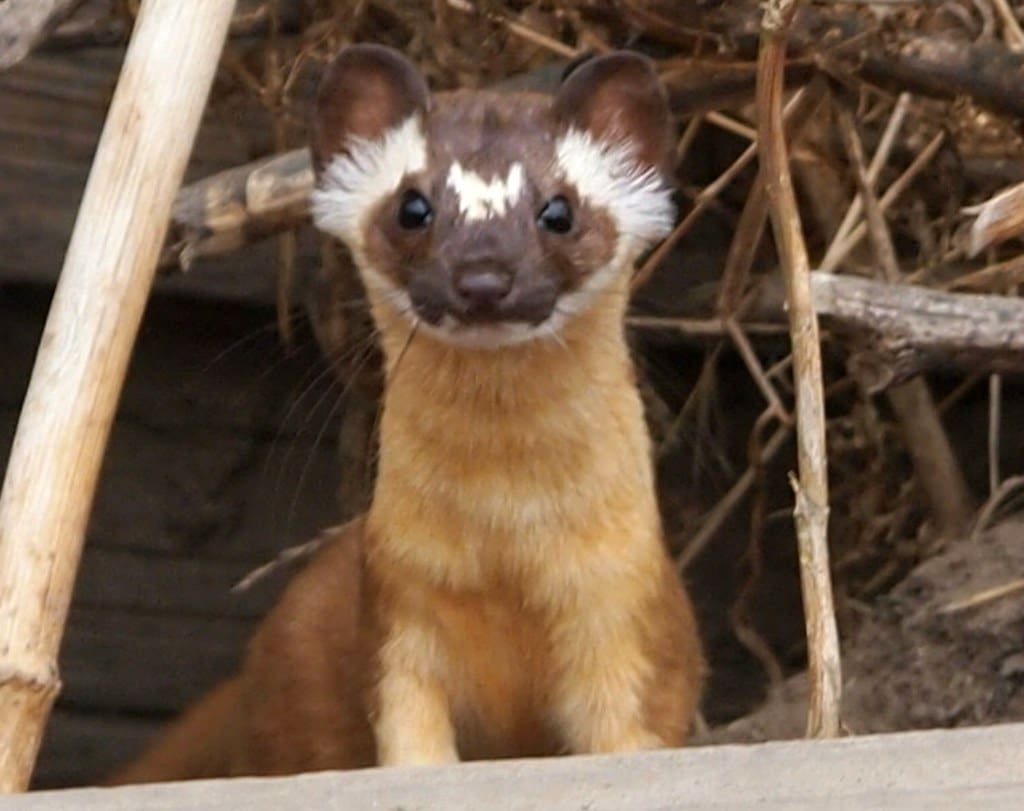| Long-tailed weasel – Neogale frenata Perhaps the word carnivore conjures a specific image to your mind. Lions, tigers, and bears, oh my! But carnivores, mammals belonging to the order Carnivora and specialized in eating meat, come in all shapes and sizes. A small and mighty example from Washington is the long-tailed weasel, Neogale frenata, formerly Mustella frenata. As the common name indicates, the long-tailed weasel has… a very long tail! The tail ranges from just under half up to three-quarters of the length of the body and head, giving a combined length of 11 – 17 inches (28 – 48 centimeters). Two other common names, the bridled weasel or masked ermine, refer to the facial markings, hence the Latin name frenata, which is derived from fraenum, or bridle. |

| The long-tailed weasel prefers open habitats, such as meadows, fields, or tundra, and is adapted to climates where thick snow fall is common. They are skilled hunters both above and below snow level and have been common in our area for about 2 million years, thriving during the repeating Ice Ages, including the Pleistocene Ice Age when glaciers were forming the bog here at SHADOW. Of all the Mustelids, the weasel family, the long-tailed weasel is the most general in its prey choice and is a highly successful species. Primarily dining on other mammals such as voles, the long-tailed weasel will also eat birds, eggs, reptiles, fish, insects, and even worms if need be. It may sometimes take prey larger than itself, such as rabbits or chickens. It would be accurate to call this weasel an all-terrain predator: it can run on land, swim, climb trees, or burrow into snow, but the long-tailed weasel may find itself the meal of predators such as coyotes and bobcats. The long-tailed weasel exhibits seasonal coat color changes, with the buff or cinnamon colored upper body changing to all white in late autumn, and back again in mid-spring. This fascinating phenomenon has been documented in over 20 bird and mammal species, and primarily in prey. Aside from the long-tailed weasel, there are only three other predators that undergo a seasonal coat color change: the least weasel, the stoat (a weasel relative), and the arctic fox. The function of the trait is to camouflage the individual during the season that is most common. Research has shown that, for mammals, change in photoperiod, the proportion of light to dark in a day, triggers changes in the hormones involved in gradual hair shedding and regrowth as well as pigment production. This is a delicately timed process: it wouldn’t do to shed all hair at once and be bald right before winter, nor would it help to change too early, and changing too late could also result in disastrous outcomes. However, shifting climate conditions, such as shortened periods of time with snow cover, are changing the game, and these molting patterns are increasingly maladaptive for some populations. |
Resources:
Long-tailed weasel
Animal Diversity


Recent Comments